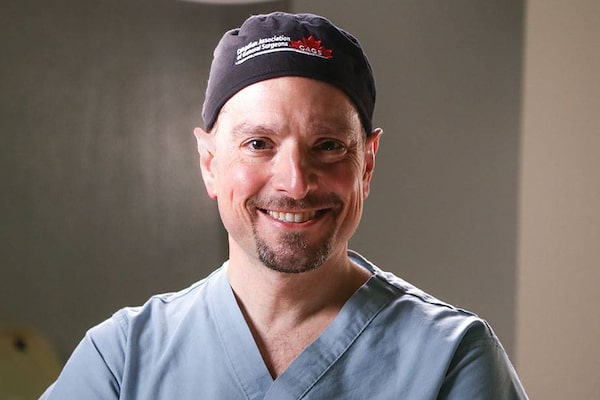
Dr. David Urbach estimates that half of the beds in Ontario’s surgical wards are occupied by people who have undergone common surgeries. Reducing that number could be “transformative,” he points out.
Linda Judith Reed is worried about the health-care system. And she is determined to do her part to improve it.
Reed is not a doctor or a scientist or a government official. She is a seasoned businesswoman who specializes in the area of personal development and human potential. She is also a long-standing financial donor to Women's College Hospital and has just turned her philanthropic focus to WIHV, the hospital's groundbreaking institute that aims to change the course of health-care delivery in Ontario and beyond.
"I think [that] for health care to be sustainable, it has to change the way it does things," notes Reed, pointing to society's aging population, an upswing in chronic ailments, and the increasingly costly interventions currently in vogue. "It could overwhelm our whole country if things get out of hand," she says.
Health care in Ontario currently consumes more than 40 per cent of the provincial budget, of which a significant portion is spent on the treatment of chronic ailments, such as hypertension, diabetes, mental illness and kidney disease. One of WIHV's mandates is to explore ways of improving care for these patients while reducing costs to the system.
Reed likes that approach. "It's progressive. For health care to be sustainable, it has to constantly change. I like to see a project that achieves results. WIHV is a distinct initiative and it relates to what I think the healthcare system needs [in order] to be successful and sustainable."
Another donor, Benita Warmbold, is similarly impressed. Warmbold (who is also a member of the WCH board of directors) and her husband, Gerry Wood, recently donated $200,000 to fund the Benita M. Warmbold Fellowship in Health Systems Innovation.
The recipient of the fellowship, Dr. Payal Agarwal, is currently exploring the methods used to evaluate health service solutions as they progress through the stages of innovation, from ideation to system-wide scaling, specifically with respect to the care of chronic conditions and high-needs, high-cost patients.
"My husband and I are both accountants," says Warmbold. "So, when it comes to budgeting and cost effectiveness, [WIHV's work] really resonated with us. They are finding cures for what is hurting health care."
Women's College Hospital has always been a place of innovation. "It's in our history," says Mary Dodd, interim president and CEO of the WCH Foundation. "The number of 'firsts' that have happened here – in women's cancers research, in cardiac care focused specifically on women, in women's mental health – it's a history of hope and innovation. WIHV is the next step, to lead us into the future."
But none of this work is possible without money. "Philanthropy is everything," Dodd says pointing out that the provincial government does not fund research. To achieve its mandate – which also includes testing new health-care models, consulting with government on policy matters and with entrepreneurs on health-care innovations, and analysing health care data to identify waste – WIHV will continue to need the generous support of the donor community.
Dr. Sacha Bhatia, director of WIHV, calls it "venture philanthropy" – a daring bet on systemic change. "[Donors] are not buying a building; they're investing in an innovative start-up model of research," he says. "It's intangible. It's a leap of faith. But our successes will give them a good return. Their willingness to donate validates that we are on the right track."
"It really resonates with some – this concept of investing in change," says Dodd. "It brings out passion."
Reed concurs. "When I give, it must come from the heart. My heart has to say, this is really important – important to society. I've had some difficult health-care issues and it's very frightening. Your health is your life."
This content was produced by The Globe and Mail's Globe Edge Content Studio. The Globe's editorial department was not involved in its creation.